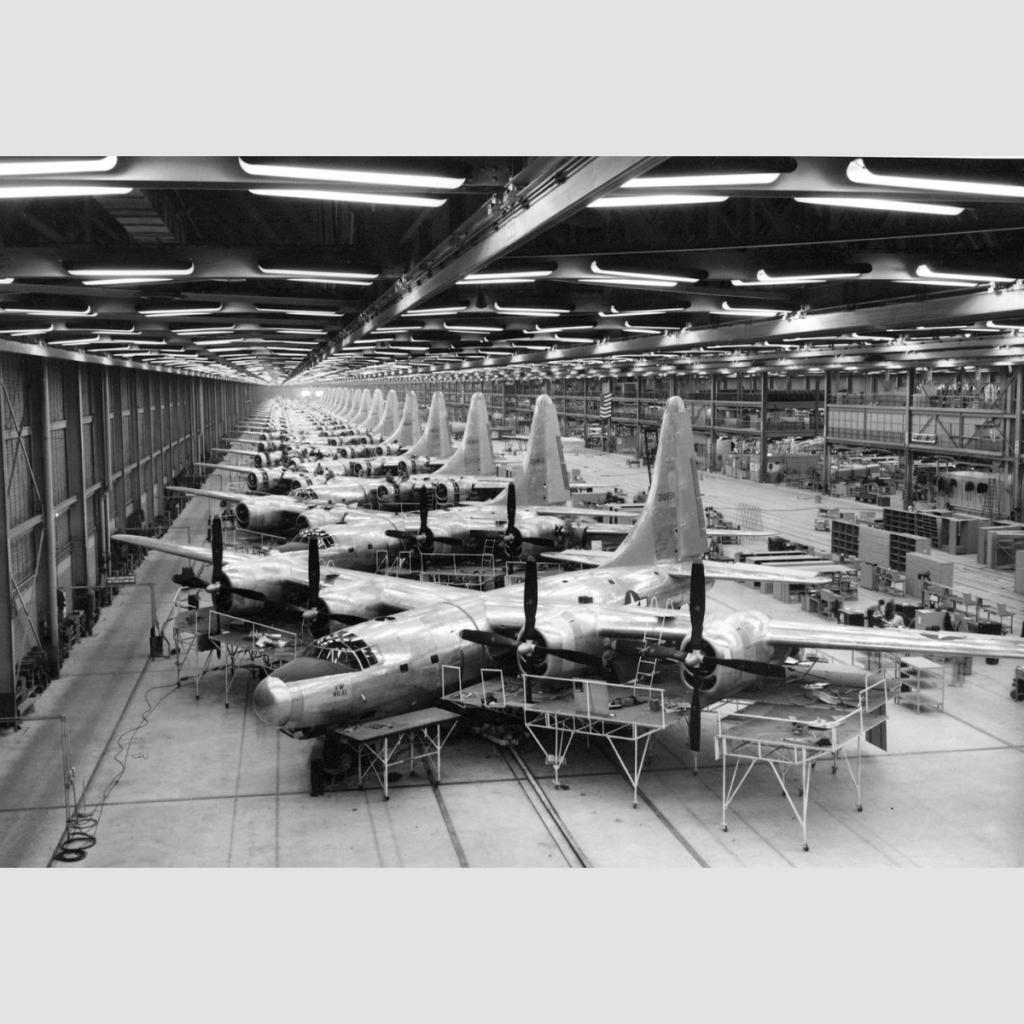
The B-32 Dominator was initially intended as insurance against the failure of the B-29 program; however, the success of B-29 development and operational deployment made the cancellation of the Dominator a very real possibility at several points in its development.
The Army Air Forces wanted to begin replacing B-17s and B-24s with B-32s in the summer of 1944. The plan called for Mediterranean-based B-24 bomb groups to transition first, followed by other groups in the 15th Air Force and finally 8th Air Force groups.
Because the B-32 test program was so far behind schedule, however, not a single B-32 was ever sent to the Mediterranean or European Theaters of Operation.
In December 1944 the B-32 program was almost canceled again. This time it was saved pending completion of a service test program. While the service test proceeded, combat crew training was started in preparation for deployment to the Pacific (pending a successful service test.) The service test revealed several minor and a few major problems, and the program was near cancellation once again in the spring of 1945.
Convair built the B-32 Dominator because the US Army Air Force wanted a backup for the Boeing B-29. There were times during the breaking in of the B-29 when Hap Arnold would inquire about the status of the Dominator, but Convair was running into a lot of problems of their own.
They had a serious weight issue and eventually eliminated the pressurized cockpit. Full-scale production did not begin until late 1944, and only two groups that were equipped with B-32s were trained in time to deploy to the Western Pacific before the war was over.
The Dominator was built in small numbers and used in only a very few combat actions during the last few weeks of World War II. A total of 300 B-32s were ordered, but only 118 were delivered to the USAAF. A total of 130 were flyable, and 170 more were canceled.
After VJ-Day, the surviving B-32 aircraft were ordered to return to the United States for storage. Flyable aircraft at Consolidated factories were flown directly to scrap yards at Kingman Army Airfield in Arizona, Walnut Ridge in Arkansas, and Davis-Monthan in Tucson.
All partially built B-32s were scrapped at the Consolidated assembly plant in Fort Worth. By 1947, most of the B-32 airplanes that had been sent to the disposal centers had been scrapped. The last remaining B-32 was scrapped in the summer of 1949.
